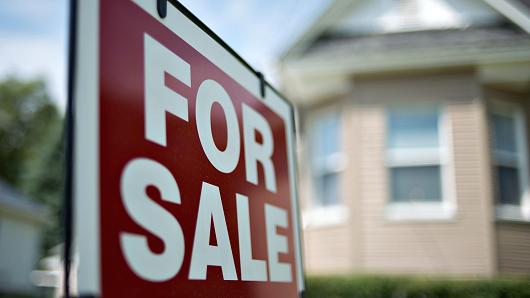ATLANTA, Feb. 18, 2015 – The adage “youth is wasted on the young” doesn’t apply to today’s single, female Baby Boomers. In fact, 76 percent of single women over 55 feel younger than their age, according to new data from Del Webb, a national brand of PulteGroup, Inc. (NYSE: PHM), one of the nation’s largest homebuilders.
The first data in a series of new results from the recently conducted Del Webb Baby Boomer Survey of single, Baby Boomer women, finds that 74 percent of respondents are as happy, or happier, than they were at age 35 and nearly half (45 percent) believe their best years are yet to come.
Building specifically for homebuyers ages 55 and older, Del Webb is America’s largest builder of active adult communities with more than 50 Del Webb communities in 21 states. Of the 76 million Baby Boomers, recent U.S. Census data shows that as many as 28 million (or 37 percent) are single females. Del Webb has conducted more than ten Baby Boomer surveys since 1996. The 2015 Del Webb Baby Boomer Survey is the first time ever that the company has exclusively surveyed this unique demographic to take a closer look at who they are and what really matters to them.
Building specifically for homebuyers ages 55 and older, Del Webb is America’s largest builder of active adult communities with more than 50 Del Webb communities in 21 states. Of the 76 million Baby Boomers, recent U.S. Census data shows that as many as 28 million (or 37 percent) are single females. Del Webb has conducted more than ten Baby Boomer surveys since 1996. The 2015 Del Webb Baby Boomer Survey is the first time ever that the company has exclusively surveyed this unique demographic to take a closer look at who they are and what really matters to them.
“Boomer homebuyer preferences and trends have changed dramatically in the 55 years since the first Del Webb community opened, but none stand out more than this generation’s movement toward an active lifestyle that rivals people half of their age,” said Ryan Marshall, executive vice president of homebuilding operations, PulteGroup. “Single, female Boomers have emerged as a powerful demographic. They have diverse needs, and it is incumbent on us to develop communities that offer an overall experience that reflects all that they want out of life.”
The study finds that the single, female Boomer demographic is incredibly confident. According to the 2015 Del Webb Baby Boomer Survey, not only do 80 percent of respondents rank having self-confidence as “very important,” but 76 percent are more empowered now than they were at age 35. In fact, more than one-in-five (22 percent) say they also feel more attractive than they were at 35.
That confidence may be attributed to the fact that 54 percent of single, female Boomers are as active or more active today than they were at 35. The 2015 Del Webb Baby Boomer Survey shows that four-in-five (81 percent) of single, female Boomers rank being physically healthy as “very important,” and 68 percent of respondents rank a healthy lifestyle as their first priority, after time with family and friends.
Healthy lifestyle habits among this demographic include a number of high-energy activities, including some that may be unexpected. Nearly two-thirds (59 percent) of respondents report exercising at least a few times a week, engaging in activities including:
- Weight training (27 percent)
- Hiking (19 percent)
- Yoga (18 percent)
- Biking (16 percent)
- Swimming (14 percent)
Other activities mentioned by respondents include tai chi, free-style dancing and horseback riding, among others.
“The lifestyle that single, female Boomers are embracing may be surprising to some, but it embodies what we see every day among our residents and prospective homebuyers,” said Lindy Oliva, division president, PulteGroup. “Understanding that Del Webb residents demand a lifestyle defined by independence, vibrancy, engagement and fulfillment, has shaped the community designs and amenities offered in Del Webb communities for the past five decades.”
Additional data on this dynamic demographic will be released throughout the year, including sentiments related to dating, home preferences and financial security/retirement. For more information, visit www.pultegroupinc.com.
About the Del Webb Baby Boomer Survey
The Del Webb Baby Boomer Survey polled 1,020 single, female U.S. adults ages 50-68. The survey was conducted online by Nielsen from December 1-8, 2014. Findings for the total sample are projectable to the universe of 50-68-year-old U.S. females. At a 95 percent confidence level, a margin of sample error of +/- 4 percent applies to the sample. Since 1996, Del Webb has conducted more than ten Baby Boomer surveys to better understand this large, powerful demographic.
About Del Webb
Del Webb is a national brand of PulteGroup, Inc. (NYSE: PHM). Del Webb is the pioneer in active adult communities and America’s leading builder of new homes targeted to preretirement and retiring boomers. Del Webb builds consumer inspired homes and communities for active adults ages 55+ who want to continue to explore, grow and learn, socially, physically and intellectually as they look forward to retirement. For more information on Del Webb, visit www.delwebb.com.
About PulteGroup, Inc.
PulteGroup, Inc. (NYSE: PHM), based in Atlanta, Ga., is one of America’s largest homebuilding companies with operations in approximately 50 markets throughout the country. Through its brand portfolio that includes Centex, Pulte Homes, Del Webb and DiVosta Homes, the company is one of the industry’s most versatile homebuilders able to meet the needs of multiple buyer groups and respond to changing consumer demand. PulteGroup conducts extensive research to provide homebuyers with innovative solutions and consumer inspired homes and communities to make lives better.






.jpg)